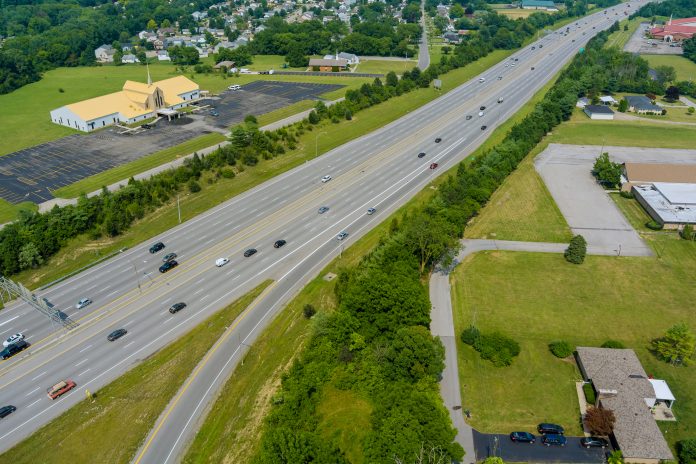Value of Interstate highways to the economy includes $742 billion a year moving goods, according to researchers.
Economists over the years have used various methods to estimate the economic benefits of highways, especially the Interstate Highway System, which introduced a nationwide system of limited-access super-highways comparable to Germany’s autobahns and Italy’s autostrade. As econometric methods become increasingly sophisticated, it’s not surprising that recent years have brought forth new, improved studies of this sort.
The latest is a working paper from the National Bureau of Economic Research, with the rather bland title of “Highways and Globalization.” Working Paper 27938 was produced by economists Taylor Jaworski, Carl Kitchens, and Sergey Nigai. The study is a big enough deal that it was featured in a Washington Post column on July 18, “The Most Valuable Interstate Highways.”
That headline and story are a bit misleading, implying that the study’s biggest finding—of annual economic benefits of $742 billion—is the total economic value of those highways. Actually, the modeling in the paper is limited to only goods movement on the Interstate system, including trade among the 48 contiguous states and imports and exports via seaports and border crossings with Canada and Mexico.
The authors built a detailed econometric model of the flow of goods over the entire federal and state highway network, taking into account over 3,000 counties and the major seaports and international border crossings. They modeled trade flows on this network, taking into account known congestion levels and both first-best and second-best routes between origins and destinations. After calibrating the model using the entire U.S. highway system, they removed the entire Interstate highway system from the model and re-ran it. This enabled them to estimate the annual value added by the Interstate system—$602 billion in 2012 dollars, or $742 billion in 2021 dollars.
For a second counter-factual exercise, they re-ran the model 10 more times and in each run removed one of the 10 longest Interstates. Below I’ve included six of these, with the economic values updated to 2021 dollars.
Value of six major Interstates
| Interstate | Route-miles | Annual value $B | Annual value/mile $M |
| I-5 | 1368 | $33.9 | $24.5 |
| I-10 | 2452 | $49.5 | $20.1 |
| I-70 | 2066 | $51.6 | $24.9 |
| I-75 | 1752 | $51.5 | $29.3 |
| I-80 | 2875 | $66.7 | $23.2 |
| I-90 | 2797 | $48.8 | $17.4 |
From the table, we can see that the most productive Interstates for goods movement are I-80 and a near tie between I-70 and I-75. But in terms of trade value per mile, the productivity champs are I-75 and a near tie between I-5 and I-70.
Here are several points to keep in mind in assessing these results. First, I am not an economist, let alone an econometrician, so I cannot assess the validity of their detailed methodology. This is a working paper, so I’m sure other econometricians will be looking at the assumptions and equations and pointing out any shortcomings.
Second, these results apply only to the goods-movement function of the Interstates. Their value for personal travel—both urban and long-distance—is over and above what is estimated in this paper. And third, of course, there are one-time and ongoing externality costs of the Interstates, as highway critics keep reminding us. Comparing total annual benefits with total annual costs is not part of this paper, but my guess is that the total benefits far outweigh the total costs.
There is also the question of value for money. The cost of building the Interstates is reported as $114 billion, equivalent to $535 billion in 2020 dollars. For the system to yield economic benefits of over $700 billion per year just from better goods movement is astounding—it’s hard to find a larger return on investment in infrastructure. And with its reconstruction and modernization estimated at a one-time investment of $1 trillion by the Transportation Research Board’s special committee on the Interstate system’s future, that huge need is easier to justify as a means of preserving and increasing the Interstate system’s benefits going forward.
Originally published by the Reason Foundation. Republished with permission.
For more Budget & Tax News.











[…] post Value of Interstate Highways (Study) appeared first on Heartland Daily […]